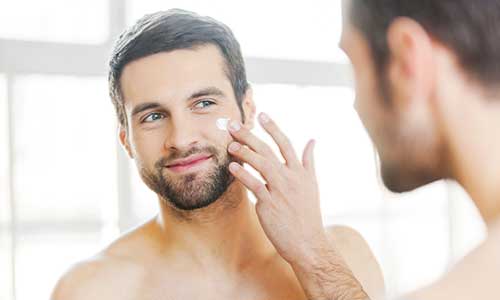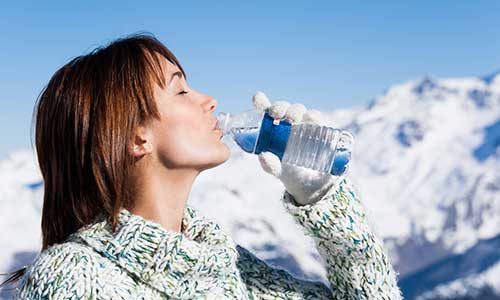A guide to skin care on the slopes
- Overview
When you're preparing for a ski trip, you're probably more concerned about the possibility of injury from a fall, but on the slopes your skin is also vulnerable to the elements.
Windburn, frostbite and, even the dehydrating effects of central heating in your chalet can all irritate skin, so it’s worth taking precautionary measures if you don’t want skin complaints to spoil your holiday.
Preparing your skin
The sun injures your skin through oxidation: a strong antioxidant such Vitamin E taken in tablet form before and during your holiday can help minimise risks. Start taking 400 IUs of Vitamin E everyday two weeks before your holiday. During the holiday, increase this dosage to 800 IUs and look for sunscreens that contain vitamin E.

Protection from the sun
Although it can feel counter-intuitive to apply sunscreen in the cold, the sun at high altitude is more harmful than at sea level thanks to the thinner atmospheres, and snow also acts as a mirror, reflecting the sun’s rays for a double-helping of skin damage. As skiers and snowboarders tend to stay out in the sun all day with little opportunity for shade, sun lotion is essential for protection.
Not all sunscreens are made equal. Face-planting in the snow, pulling your jumper over your head and sweating into your goggles will blow bog-standard creams out of the water. For maximum resilience, look for high SPF/UVA, water-resistant, photostable creams and apply liberally, in front of a mirror for full coverage of all exposed areas. Allow for drying time before dressing: some sunscreens can stain clothing and accidentally rubbing off cream before it sinks in will make it less effective. Take a miniature out with you and reapply every one to two hours.
Slapping on the suncream can irritate your skin, particularly if it's sensitive. Some sunscreens also contain chemicals that absorb UV which are more likely to provoke these sensitivities. Try creams that provide a physical barrier instead, like zinc or titanium dioxide and chose creams specially formulated for the face: these are less likely to irritate sensitive skins.
Extra protection where it's needed
Lips contain no natural pigmentation to protect from UV, making them the body part that is most vulnerable to sun-damage. Slick with high SPF/UVA lip balm regularly, especially after eating and drinking. Sun block will help to protect your other most exposed areas: the nose, ears and brows.

Avoiding dehydration
Get plenty of water
Despite the cold, all of that high-octane activity can leave you dehydrated from breathing hard and sweating. You should aim to drink 375ml - 500mls of water per hour on the slopes to replace fluid lost. Watch out for the temptation of ending each run with a hot chocolate though - while it can replenish energy, it can play havoc with your skin.
Minimise alcohol intake
Similarly après-ski is not your skin's friend. As a diuretic, alcohol dehydrates the body and in the skin, this shows up as dryness. It also starves skin of essential minerals such as iron, making it look pale. So limit your gluhwein intake and if you two have a tipple or two, make sure you continue to drink water throughout.
Avoid hot showers and baths
While it’s tempting to slip into a steaming bath after a cold day on the slopes, hot water can strip natural oils from your skin, leaving it dehydrated. Opt for warm water instead.
Ask your chalet for a humidifier
Counter-act the drying effects of alpine air and central heating with a humidifier in your chalet: this can soothe your irritated complexion while you sleep, so you wake up feeling refreshed.
Last updated Monday 28 October 2019
First published on Tuesday 5 February 2019
